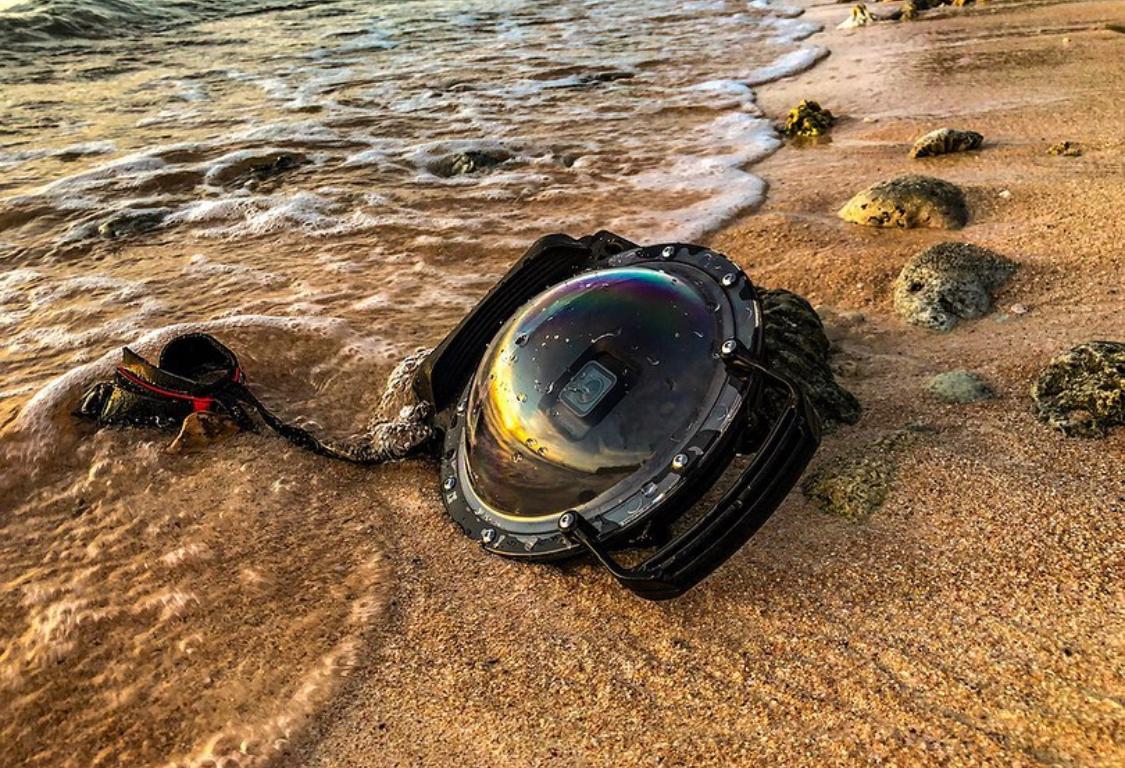
The Ultimate Guide to Waterproof Phone Cases for Underwater Photography (Why a Dome Housing Like GDome Beats the Rest)
Your phone has a powerful camera. And when you're in crystal-clear water with great light, it’s tempting to start filming or snapping photos. But once that phone goes underwater, things change, images blur, colours wash out, and one wrong move could ruin your device.
If you’ve ever searched for "waterproof phone case for underwater photography," you’ve probably seen everything from cheap plastic pouches to heavy-duty scuba housings. So, how do you pick the right one?
In this guide, we compare the most common waterproof phone case types and show why a dome housing like GDome offers serious advantages, especially if you're after clear, cinematic results. Whether you're snorkelling, surfing, or filming your next adventure, this is what you need to know before taking your phone underwater.
Why Regular Waterproof Phone Cases Fall Short
1. They're made to protect, not to create.
Most waterproof phone cases (like LifeProof, OtterBox, or generic pouches) are built for protection, not image quality. They're fine for keeping your phone dry, but they:
-
Use flat plastic windows that distort images
-
Trap air bubbles in front of the lens
-
Lack of control access underwater
2. Touchscreens barely work when wet
If you’ve tried to operate your phone inside a soft pouch underwater, you know the struggle. Tapping, swiping, and adjusting settings is hit or miss, especially with water pressure.
3. No support for creative filming
Standard waterproof cases don’t let you add filters, external lights, or mounts. And without lens correction (like a dome), your shots often have a weird, squished look.

What Makes Dome Housings Different (and Better)
1. Dome ports fix underwater distortion
Water bends light. Flat ports make this worse. Dome ports restore the natural field of view and reduce corner blur. This is key for wide-angle underwater photography.
2. They’re designed for filming, not just floating
Dome housings like the GDome Mobile V3 Pro are built with creators in mind. You get:
-
A rigid frame that stays stable underwater
-
Mounting points for lights and grips
-
Compatibility with wide-angle lenses and filters
3. Better ergonomics and usability
With a GDome, you can trigger the shutter using physical buttons, screen or Bluetooth. The dome stays clear thanks to a hydrophobic coating, and you can film for longer without fogging or leaking.
4. Reusable, repairable, and modular
Most pouches wear out. GDome is built to last. Replace O-rings, swap domes, or upgrade mounts without tossing the entire housing.

Real-World Use Case: Bali Snorkelling Shoot
Travel content creator Anna C. used a GDome Mobile V2 Pro with her iPhone 14 Pro while snorkelling in Bali. She captured 4K slow-motion clips of coral reefs and swimming with turtles:
“The clarity was unreal. No fogging. I could frame my shots properly and the dome made the colours pop. My friend used a cheap pouch, and all her footage looked washed out.”
This is the GDome difference.
How to Choose the Right Underwater Phone Housing
Consider these factors before buying:
| Feature | Waterproof Pouch | Rugged Flat Case | (GDome) |
|---|---|---|---|
| Max Depth | 1-3m | 2-5m | 5m |
| Image Quality | Poor | Average | Excellent |
| Touchscreen Use | Limited | Moderate | Full |
| Mount Support | None | Limited | Full (GoPro mounts) |
| Lens Correction | None | Minimal | Yes (dome optics) |
| Reusability | Low | Moderate | High (modular parts) |
What to Look for in a Dome Housing
-
Rigid shell – For stability and protection
-
Clear dome – For wide-angle correction
-
Trigger system – Physical or Bluetooth shutter
-
Accessory mounts – Lights, floats, handles
-
Depth rating – At least 5m (GDome offers more)
-
Anti-fog – Sealed O-rings, silica inserts, venting options
GDome Models for Phones and DSLR/Mirrorless: A Quick Breakdown
GDome Mobile V3 Pro
-
Fits most flagship smartphones
-
Large dome port
-
Customisable inserts for different phones
-
Ideal for underwater video and social content

GDome XL Surf
-
Ruggedised for surfing and water sports
-
Includes grip handles and mounting brackets
-
Perfect for dynamic filming in rough conditions

Tips for Better Results Underwater
-
Use a red or magenta filter for better colour in deeper water
-
Rinse the housing with fresh water after every use
-
Use a wrist strap or floating handle to avoid losing your gear
-
Practice framing and movement before jumping in
-
Lock focus/exposure before sealing the case
Your phone deserves more than a glorified zip-lock bag. If you’re serious about capturing underwater footage—whether for travel, socials, or just fun—a dome housing like GDome will deliver sharper results, better colours, and fewer headaches.
You’re already carrying a great camera. Equip it with a tool that lets it shine—underwater.
FAQ
Q: Can I use GDome for scuba diving?
A: GDome housings are rated up to 5m. For scuba, check your model’s rating and dive within limits.
Q: Will my phone fit inside a GDome?
A: Most models support iPhone, Samsung, Huawei, and other large smartphones. Use the fit guide to confirm.
Q: Can I shoot slow motion underwater?
A: Yes. GDome’s dome port keeps shots stable and clear, even at 120–240fps.
Q: What about fogging?
A: Use anti-fog inserts and always seal your housing in a dry, cool place.
Q: Is it worth the price?
A: Absolutely—especially if you care about image quality, durability, and creative control.




